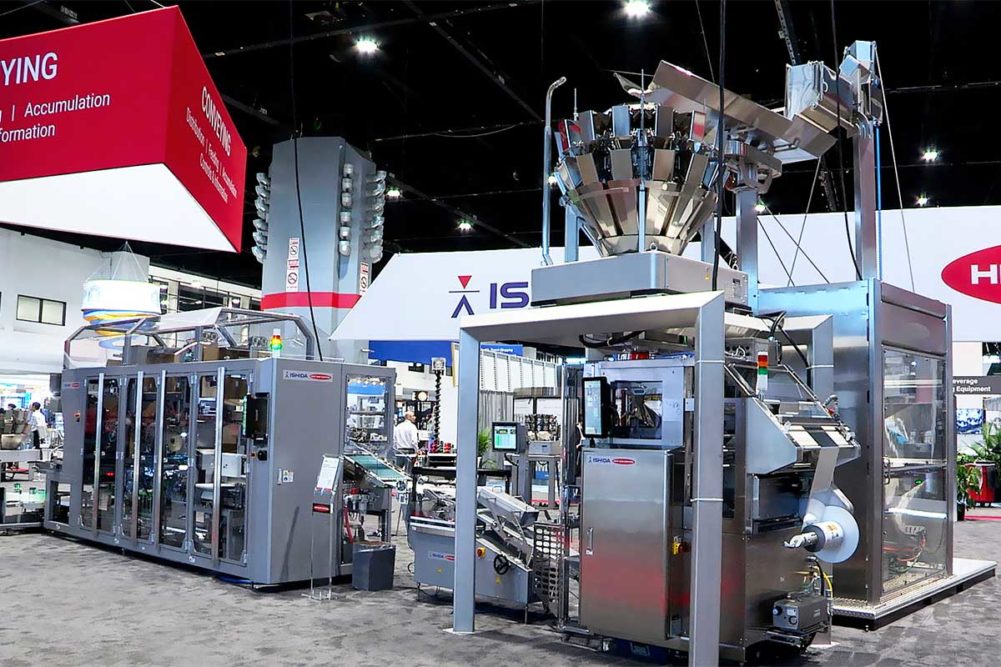Consumers are clamoring for snack variety. Half of those surveyed (49%) recently said that they are looking for snacks that come in a variety pack, according to Circana’s 2023 Snacking Survey. That is a leap of eight points over a year ago.
Manufacturers of packaging equipment say snack producers are interested in finding the best ways to assemble these multipacks as they seek to give consumers what they want.
“We see a lot of requests,” said Jeffrey Almond, industry manager, snack food packaging, Heat and Control. “First of all, it starts with small bag production, which is part of what variety packs are all about. What’s the best way to make small bags as fast as possible? Then, what’s required to put these bags together, reorient them to get them in the variety packs.”
Snack manufacturers can either assemble variety packs in the packaging department as products come straight off the line or they take the snacks to a warehouse and assemble them there. They can also use a co-packer to assemble them. Whether the process is fully automated, done manually or falls somewhere in between, assembling them is never easy.
“If you’re going to do a variety pack, you need to understand that it’s a tedious process that takes a lot of patience and thought,” Mr. Almond said. “The ones who do it most successfully have figured out how to make it efficient. Some people look at it as a nuisance, and others embrace it and say, ‘OK, we’re going to figure out the most efficient way to do this.’ But there are ways we can do it as inexpensively as possible with the least amount of waste and the least amount of labor and still serve the market needs.”
Snack makers must overcome several obstacles when assembling variety packs. Because of the cost of automating the process, they are often done manually.
“Labor by far is the biggest obstacle,” said Joe Curcio, Northeast regional sales manager, BluePrint Automation. “I’ve seen as many as 40 people assembling variety packs in facilities. It’s a lot of people for something that doesn’t have a lot of value add. The other obstacle is waste. They have to package the product in a case or on a pallet, then it goes into storage and then they bring it back and mix it with other ones. Typically, they end up throwing away some of that corrugate or all of it and the stretch wrap.”
He said many snack makers don’t build the variety packs in the packaging department because assembling them on the floor takes up a lot of space, which can be at a premium in that part of the plant.
“If you’re running an eight-flavor variety pack, you’re going to have at least eight pallets of product that people have to pull to build the final package,” Mr. Curcio explained. “That takes up some floor space as well.”
He estimated that roughly half of the snack makers assemble variety packs in warehouses away from the production floor and half send them to a co-packer.
Those opting for live feed applications require room for a multiple robotic case packing operation, which takes up more room than a standard case packer, said Jason D’Arcy, product group sales manager, vertical, Syntegon.
“We’re seeing customers who’ve established their whole multi-flavor packs start to bring that process back in house and make those variety and those multipacks in their own facility,” he added. “When you figure the added transportation costs — whether you’re doing it in your own factory or offsite at a third party — you have shipping, you’re moving loose bags somewhere, having them repacked and bringing them back into your network. That all adds costs.”
And the more combinations that snack makers plan to put together, the more of a logistics challenge they will have, said Dennis Gunnell, president, Formost Fuji. He suggested that the marketing team define their expectations if a company plans to automate variety packs and stick with the plan to avoid problems down the road.
“Making all the items and getting them all to the same spot at the same time is the No. 1 biggest problem,” he said. “No. 2 is just the sheer variety of options they can do. The more items in that product line that they want to bring together in their variety pack, the more difficult it can be.”
For products that go to a warehouse or co-packer, ensuring that products are handled and in good shape for variety packs can be challenging.
“When they put them in a box and ship them to a co-packer, those packages can get wrinkled, they get stacked on top of each other and the ends get smooshed in,” Mr. Gunnell said. “So when the co-packer goes to package them, it’s much harder to get them into a uniform shape and put them into a nice package because of the way they were handled three weeks ago.”
This article is an excerpt from the May 2023 issue of Baking & Snack. To read the entire feature on Snack Packaging, click here.





